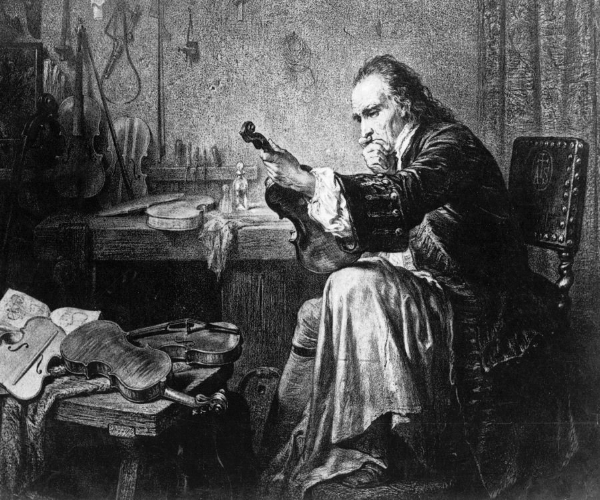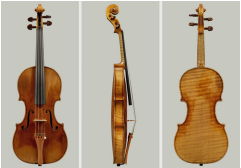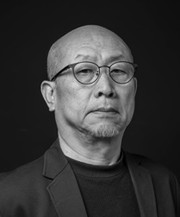
[아츠앤컬쳐] 지난 9월 21일, 가로수길 하이스트리트이탈리아 4층에서 ‘스트라디바리우스의 숨겨진 비밀’ 특별 강연이 열렸다. 세계적으로 알려진 명기 바이올린을 제작한 안토니오 스트라디바리의 악기에 대해서 많은 사람들은 바이올린을 만들 때 사용한 재료가 무엇인지, 어떻게 자신만의 특별한 니스를 만들었는지, 니스를 바르기 전에 목재를 가공했는지, 바이올린을 구성하는 부품들을 붙이기 위해서 어떤 종류의 접착제를 사용했는지에 대한 궁금증이 많았다.
이탈리아 파비아대학교의 교수이자 크레모나 바이올린박물관의 아르베디연구소 소장인 Marco Malagodi 교수(화학 전공)는 최근 몇 년 간의 연구를 통해 스트라디바리우스 바이올린에 숨겨진 ‘비밀’을 밝혀냈다고 했다.

300년의 역사를 가진 이탈리아 바이올린 제작은 크레모나를 중심으로 장인들의 작업이 이어졌지만 크레모나의 정치, 경제적인 입지가 약화되면서 프랑스나 영국 그리고 미국으로 제작소가 옮겨 갔다고 한다. 그후 이탈리아 파시스트 정권이 들어서면서 바이올린 제작에 다시 힘을 썼기에 이탈리아 크레모나에서 바이올린 제작이 명맥을 유지하고 있다. 안토니오 스트라디바리는 프랑스 영국 궁정을 위해 1,400여개의 악기를 제작했다. 당시 바이올린을 만들었던 가문의 특징은 자신들의 비법을 문서로 남기지 않았고 구두로만 전수했고 지금도 크레모나의 장인들은 자기들만의 비법을 절대 공개하지 않는다고 한다.
크레모나에 소재한 바이올린 박물관은 스트라디바리 10점과 과르네리, 아마티를 소장하고 있고 아르베디연구소에서는 적외선, 가시광선, 자외선, X-ray를 사용하여 분석하고 연구하는데 연구원들은 화학, 물리 전공자들이다. 바이올린에 칠해진 니스(varnish)를 분석하기 위해 현미경, 내시경도 사용하고 3D로 스캔해서 분석하는데, 현재도 130여개의 악기를 분석 중이라고 한다.
나무는 Val di Fiemme에서 자라는 나무를 사용하는데 이유는 연중 기온 변화가 없어서 나무의 나이테 크기가 일정하기 때문이고 주로 상판으로 사용한다. 접착제는 동물성 아교를 주로 사용했고 소의 가죽이나 우유에서 추출한 아교(Glue)를 썼다는데, 당시에는 토끼 아교 사용을 했었기에 소 아교를 사용했다는 사실에 연구원들은 놀랐다고 한다. 나무와 나무를 접착시키기 위해서는 석고 처리했는데 접착제가 나무에 스며드는 것을 방지하기 위해서라고 설명했다.
마르코 말라고디 교수는 베토벤의 말을 인용하며 강의를 마쳤다. “Music is a higher revelation than all wisdom and philosophy” - Ludwig van Beethoven
The Secret of Stradivarius
4th floor of High Street On September 21st, a special lecture ‘The Hidden Secret of Stradivarius’ was held on the Italia in Garosu-gil.
When it comes to the instruments of Antonio Stradivari, who created the world-famous masterpiece violin, many people wonder what materials he used to make the violin, how he created his special varnish, whether he processed the wood before applying the varnish, and what constitutes the violin. There were many questions about what type of adhesive was used to attach the parts.
Professor Marco Malagodi (chemistry major), professor at the University of Pavia in Italy and director of the Arvedi Institute at the Cremona Violin Museum, said he had uncovered the "secret" hidden in the Stradivarius violin through research in recent years.
Italian violin production, which has a history of 300 years, was continued by craftsmen centered in Cremona, but as Cremona's political and economic position weakened, production facilities were said to have moved to France, England, and the United States. Afterwards, with the coming of the Italian Fascist regime, efforts were made to make violins again, and violin making continues to be popular in Cremona, Italy. Antonio Stradivari produced over 1,400 musical instruments for the French and British courts.
The characteristic of the families that made violins at the time was that they did not leave their secrets in writing and only passed them down orally, and even now, the craftsmen of Cremona are said to never disclose their secrets.
The Violin Museum in Cremona owns 10 Stradivari pieces, Guarneri, and Amati, and the Arvedi Institute conducts analysis and research using infrared, visible light, ultraviolet rays, and X-rays, and the researchers are majoring in chemistry and physics. To analyze the varnish on violins, microscopes, endoscopes, and 3D scans are used to analyze them. It is said that about 130 instruments are currently being analyzed.
Trees that grow in Val di Fiemme are used because there is no temperature change throughout the year, so the size of the tree's growth rings is constant, and they are mainly used as tops. Animal glue was mainly used as an adhesive, and glue extracted from cow skin or milk was used. At the time, rabbit glue was used, so the researchers were surprised to learn that cow glue was used. He explained that plaster was used to bond wood to wood, and that this was to prevent the adhesive from seeping into the wood.
Professor Marco Malagodi ended his lecture by quoting Beethoven.
“Music is a higher revelation than all wisdom and philosophy” - Ludwig van Beethoven

글 | 전동수 발행인

